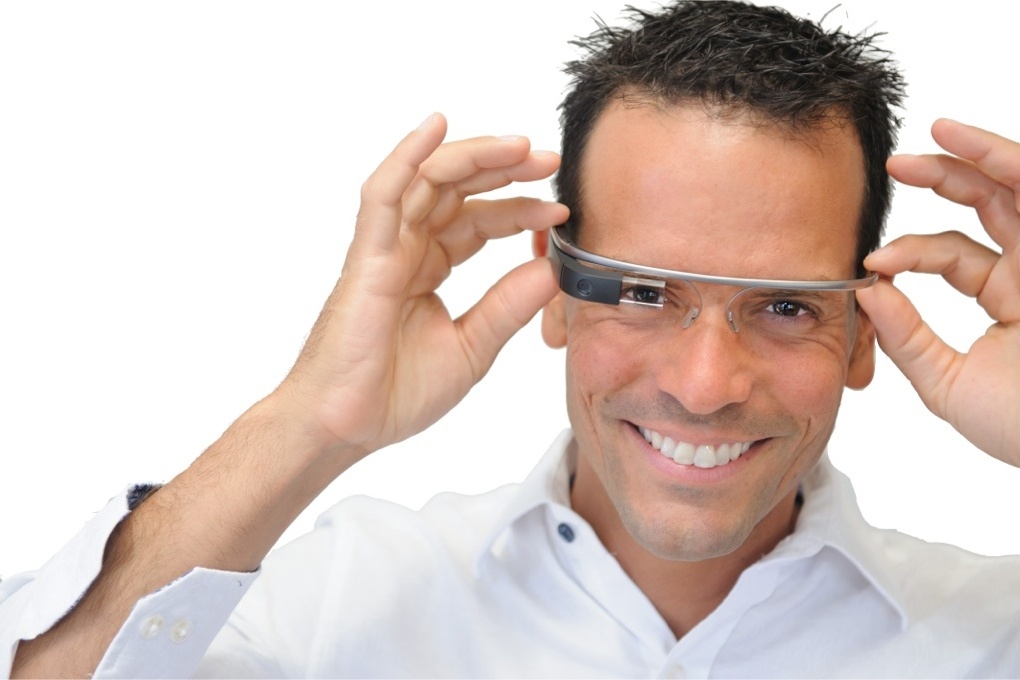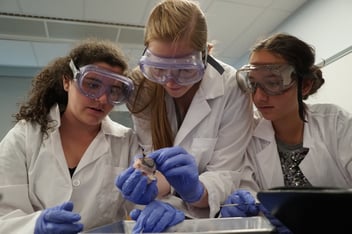Ned Sahin, CEO of Brain Power, LLC

Explo alum Ned Sahin is a cognitive neuroscientist and the CEO of Brain Power, LLC, a "neurotechnology company focused on transforming consumer-targeted wearables like Google Glass into neuro-assistive devices." Sahin and his team build hardware and software "to help children manage the challenges and features of autism." Sahin has degrees from Williams, MIT, and Harvard, and has earned teaching awards from those same institutions. He holds six patents. He rows, travels, and writes poetry. Lucky for Explo, he still found time to chat.
Tell us what you remember about Explo.
I remember Explo as an immersive living experience where I had an opportunity to get to know life and new people. At a meta-level, everyone took ideas seriously, and there was no negative feedback for being focused. No one ever said, “you are a nerd” for being excited about something. I made some good friends at Explo, and I stayed in touch with them long after the program was over. I derived some life lessons from my time at Explo.
So you are the CEO of Brain Power. What does Brain Power actually do?
We build hardware and software to transform wearable computers like Google Glass into a neuro-assistive device. Our first offerings are tools that help children and their families and schools manage the signature features and challenges of autism. Right now, we are working on using it to address deficits in language acquisition, behavioral issues, and social interactions.
Can you give us an example of how this works and helps?
Some children on the Autism spectrum have difficulty acquiring language. Our system can tell where the child is actually looking, identify what they are seeing, and then display an exaggerated graphic of the object on the lens and speak the word in the child’s ear so they can learn the words for and recognize objects.
Prior to this, teachers and parents would have to guess where the child was looking and just hope that they were teaching the correct word/object association. Not only is that inaccurate, but it is also exhausting. The device can listen to you, correct pronunciation, monitor head movements, changes in heart rates, and other physiological signs.
Our product can “rewrite” the world around the child based on exactly what they are seeing, give the child a prompt, speak to them and hear them speak it back. It can also be interacting with the cloud at the same time, thereby collecting information for teachers to use to tailor lessons to individual kids. The data can tell them exactly where the child was experiencing difficulty.
That’s incredible! What are some other applications for your product?
Other kids have different needs. Maybe they have trouble looking directly at people or their teachers at school. Here we can “gamify” their experience by putting an overlay on the actual world. Maybe a child loves medieval knights. You can program the device to make the teacher look like they are wearing a suit of armor thus drawing and holding the child’s attention. The predictive power of our product can even help kids avoid situations that trigger negative reactions. Maybe a child is routinely disturbed by loud noises. At the onset of a noise, the device can prompt a self-calming routine.
Wow, that sounds amazing. How did you become interested in mixing technology and your academic research?
While I have always been interested in science, I have also always been pretty entrepreneurial. I started my first company, NTS (my initials) Oddjobs when I was twelve. I specialized in repairing golf carts on Cape Cod during the summer. My academic trajectory was pretty straightforward, but from an early point I was aware that academia can lead people to learn more and more about less and less until you know everything about nothing. In the sciences, your focus can narrow until what you are studying has relevance to only a tiny number of people. So I started thinking: I am a scientist, but I can start a company too.
Did anything specific trigger this realization?
I love to travel. I have visited over 45 countries. I had this epiphany when I was traveling in Asia. I was staring at a row of 17 identical restaurants, and they were all doing well and serving basically the same food. I realized that the 18th one would do well too and that it was a particularly American idea to demand that I must be the first, best, and only. By that I mean the idea that, especially in academia, the pressure is that you need to be working at the very top of the food chain, doing the most nuanced research on the mechanisms of neural encoding, for instance, to be a success. Or, for a business, your idea and implementation have to be earth-shatteringly new and at a frontier where no one has traveled before. In fact, I realized, you can serve the world well, and make a broad impact, even if you are not the only one doing something similar. For me, it was a shocking and eye-opening idea.
I also realized that some of the most wide-spread issues related to the brain were getting relatively little attention from academic neuroscientists. For instance, more people suffer from occasional headaches than any specific, medicalized condition, especially among working professionals, thus leading to a tremendous (if diffuse) loss of societal productivity and happiness. I thought, why not look for a convenient way to predict the bad headaches well in advance, so people could plan or intervene accordingly, themselves? Similarly, I thought, why not find a way to give people with epilepsy power over their bodies? I wanted to respond to the market and address a real problem, instead of a caricature academic way of starting with a solution and then looking for a problem that might require it. I wanted my work to have an impact on as many people as possible, not just the top seven or eight people who could understand my research.
That’s a really unique perspective. Was Brain Power your first attempt to address a need in the market?
Oh no! Before Brain Power I started a company called Body Sure. The idea was to have scanning kiosks that provided instant access to doctors. You could step into a kiosk at the mall at any time of day without an appointment and be checked for skin cancer. We started with skin cancer because it would be the easiest thing to see remotely but I hoped to address all kinds of conditions. There would be doctors viewing the images remotely from different time zones so you never had to wait for a traditional appointment at a specific time. Also, we could provide a service in under-served areas that had no qualified specialists.
What happened? Was Body Sure successful?
Well, we were approached by lots of angel investors and venture capital groups that were eager to fund us but it turned out that there were just too many regulatory issues involved in tele-medicine so I moved on to wearable devices and brain monitoring/augmentation, where in fact so much of my training and talent and passion converged. I had actually been working on portable brain monitoring for ten years, including for the Army. The problem was that the available technology wasn't quite ready and many things weren't possible then. Now, with the advent of Google Glass, it is not only possible, but the public is engaged. The time is right for Autism, which is astonishingly and perplexingly on the rise, worldwide.
What is your advice to Explo students?
Do what you would do all night. I still pull all-nighters because I am doing something that interests me and I can’t stop. I have meetings at 10:00 p.m. with doctors who work regular business hours and then we get together until 2:00 a.m. to solve some problem, that’s how we roll. This notion of, “following your passion” is crazy. It is too passive. Passion isn’t magic, it is what you create. You don’t find it. It is about driving something stupid forward until it smashes walls and people finally believe you mean it. You don’t follow it. This world is extremely competitive so go out there and create!
Ned Sahin was recently featured in the Boston Globe. Read about his work here.



